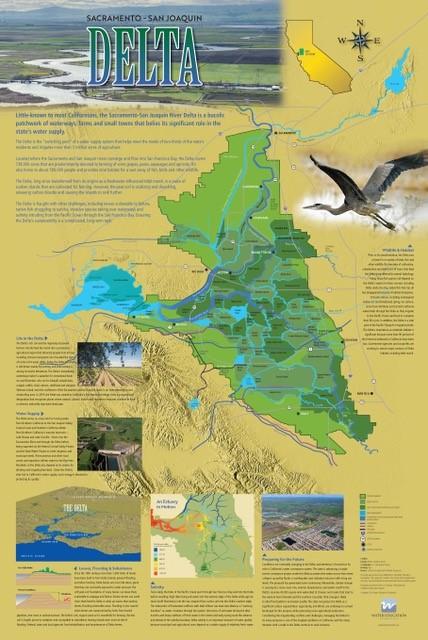Spring 2023 California Project WET Gazette
Volume XXVllI, Issue Il
Goldilocks & California Water Management
 Many people know the childhood story of Goldilocks – the girl who became lost in the woods and decided to rummage through the home of a family of bears while they were away, testing their beds and sampling their food to find the one of each that was ‘just right.’
Many people know the childhood story of Goldilocks – the girl who became lost in the woods and decided to rummage through the home of a family of bears while they were away, testing their beds and sampling their food to find the one of each that was ‘just right.’
One could see this story as analogous to the non-indigenous people who settled in California in the 1800s to use the natural resources without regard to the beings living here for centuries while complaining, perhaps in the vein of Goldilocks, that the place is too hot, too cold, too dry or – as currently is the case – too wet.
Many of us in the public seem to believe decision-makers are clueless and we can’t fathom how they could screw up decisions as simple as storing and releasing water, managing water in the landscape or favoring ‘environmental needs’ over the needs of humans – decisions that were routinely made in the past when everything was ‘just right.’
The problem is, there has never been a time in the past when everything was ‘just right.’ California’s Mediterranean climate has always been erratic to the point that air quotes are nearly always applied in any discussion of ‘normal’ environmental conditions in the state. In fact, most of our current water infrastructure was built based on a century or so of data that research has since shown to be one of the wettest periods in the past 1,000 years.
Add to this the increasingly extreme swings in annual weather that we have been experiencing over the past two decades due to a changing climate. One can only imagine how much more variable and complex the decision-making has become for natural resource managers across the board. Yet teachers and students can do more than imagine – there are multiple Project WET activities that will let you explore dilemmas and issues that water and land managers are now facing as concerns of too little water become concerns of too much water.
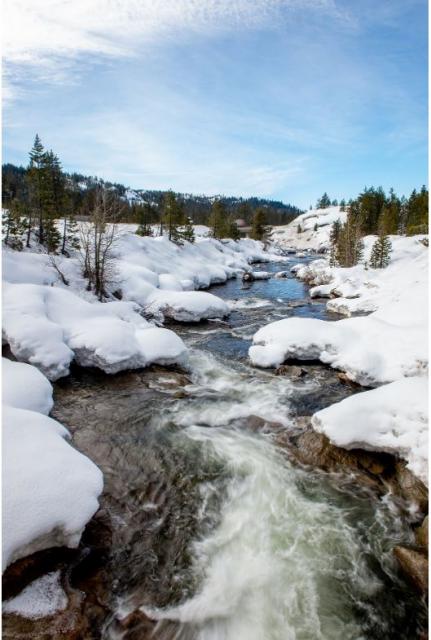 A good place to start is the record California snowpack and the variables being discussed all over the news that can influence its rate of snowmelt this spring. This is the very focus of the Project WET activity ‘Snow and Tell’ (p: 387), which teaches students how the water content of snow – the Snow Water Equivalent – is calculated and building tabletop models to study variables that can influence the rate of snowmelt. Variables studied in the activity include snow depth, slope aspect, exposure and increased heat and/or wind.
A good place to start is the record California snowpack and the variables being discussed all over the news that can influence its rate of snowmelt this spring. This is the very focus of the Project WET activity ‘Snow and Tell’ (p: 387), which teaches students how the water content of snow – the Snow Water Equivalent – is calculated and building tabletop models to study variables that can influence the rate of snowmelt. Variables studied in the activity include snow depth, slope aspect, exposure and increased heat and/or wind.
‘Snow and Tell’ also has students brainstorming and testing other snowmelt variables, which can include snow darkened by smoke, dust and other particles blown in by the wind – or the impact of rain-on-snow events that are the immediate concern as warmer storms enter California this spring. The term ‘melt rate’ does skew the thought process. Teachers could also suggest students consider variables that might reduce the rate of melt to preserve snowpack.
Researchers and water, land and forest managers are studying all of these variables affecting snowmelt and how to preserve snowpack or at least slow the rate of melt as the climate continues to heat up. Some of the strategies being tried to preserve snowpack would challenge most students to come up with something that sounds crazier. I wouldn’t be surprised if one of your students comes up with a better and more cost-effective strategy than has been considered to date.
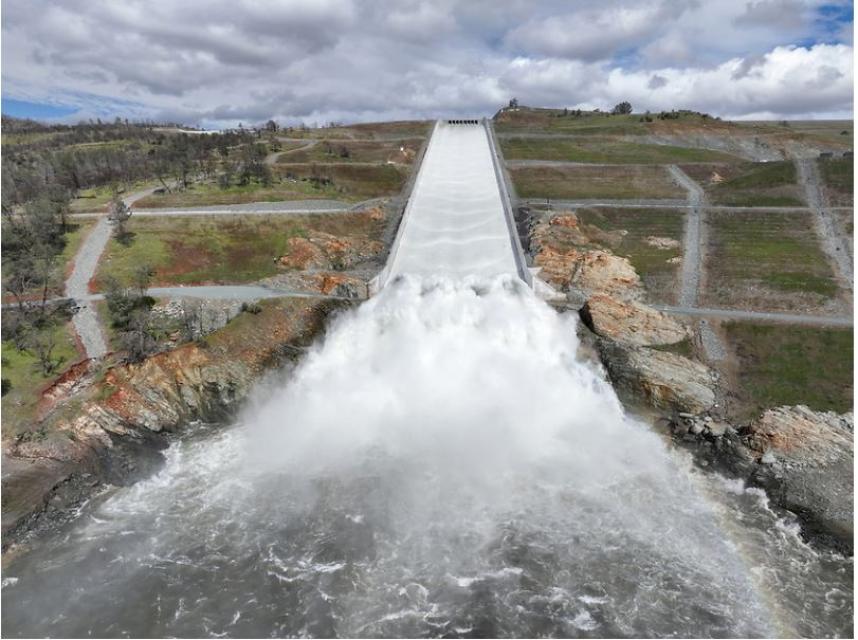 The more extreme swings between snow drought and years with large, more rapidly – and earlier – melting snowpack is a concern for dam and reservoir operators. With the simple addition of a small paper cup to the ‘Blue River’ (p; 135) activity, students can experience the challenge climate change is posing for reservoir managers. The cup represents a dam and reservoir, and the bearer is given the dual task of containing flood waters and having water to sustain flow through dry portions of the year. One major caveat: there is a limit to how much ‘water’ they can release due to the spillway size of their dam.
The more extreme swings between snow drought and years with large, more rapidly – and earlier – melting snowpack is a concern for dam and reservoir operators. With the simple addition of a small paper cup to the ‘Blue River’ (p; 135) activity, students can experience the challenge climate change is posing for reservoir managers. The cup represents a dam and reservoir, and the bearer is given the dual task of containing flood waters and having water to sustain flow through dry portions of the year. One major caveat: there is a limit to how much ‘water’ they can release due to the spillway size of their dam.
Most will find it easier to meet the dual task when simulating historic snowpack conditions in round one. But there is a good chance they will fail miserably in one or both tasks when all the water is coming down in one season – or if the water fails to show at all. It is fun as this occurs during the physical simulation. But following discussion it turns quite serious as students begin to think about the real-life ramifications and consider how one might change reservoir operations and potential implications for all downstream water users and systems.
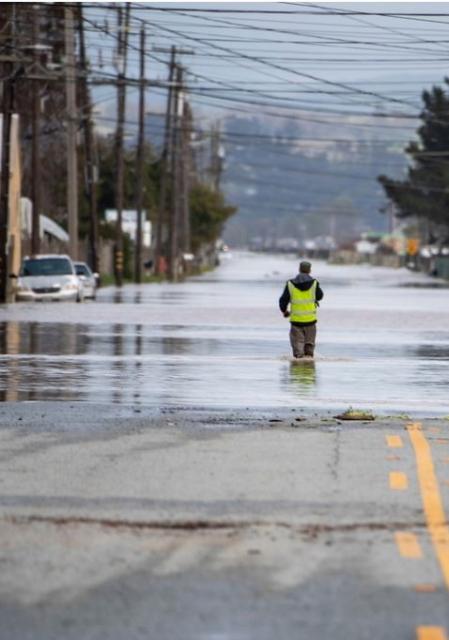 The more extreme swings between snow drought and years with large, more rapidly melting snowpack is a concern for everyone, especially those living in the lower areas of the watershed. ‘High Water History’ (p: 321) has students mapping the extent of a simulated flood, calculating economic costs and considering ‘costs’ of a disaster from loss of life, impacts to health, loss of a home and other trauma.
The more extreme swings between snow drought and years with large, more rapidly melting snowpack is a concern for everyone, especially those living in the lower areas of the watershed. ‘High Water History’ (p: 321) has students mapping the extent of a simulated flood, calculating economic costs and considering ‘costs’ of a disaster from loss of life, impacts to health, loss of a home and other trauma.
Having students study how California communities have dealt with the non-economic costs of the flooding that has occurred since January and struggling with what a community might do to better protect its most vulnerable people in future events may be the more valuable part of the lesson. Community leaders statewide are struggling with this very question, particularly considering the demographics of the neighborhoods most affected by recent floods and the unhoused members of their community.
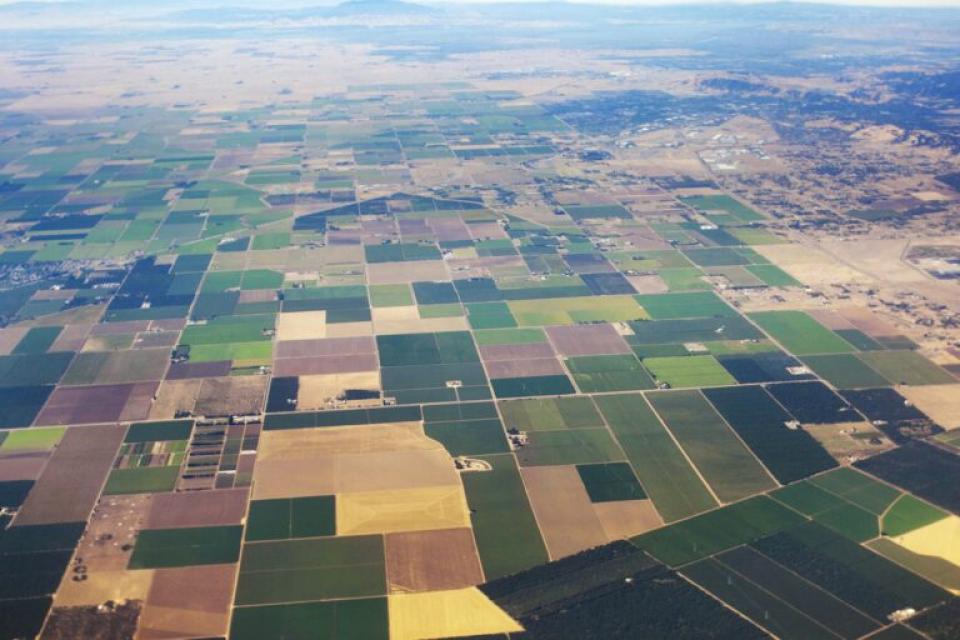 ‘Color Me a Watershed’ (p: 239) has students learning about the relationship between land use changes and the hydrology of local streams receiving the runoff. One extension written into the activity is having students consider what changes they would suggest to city planners to reduce the stream impacts – and apply what they learn in the activity to a map of their own community.
‘Color Me a Watershed’ (p: 239) has students learning about the relationship between land use changes and the hydrology of local streams receiving the runoff. One extension written into the activity is having students consider what changes they would suggest to city planners to reduce the stream impacts – and apply what they learn in the activity to a map of their own community.
‘High Water History’ (p: 321) has a similar extension-suggestion encouraging students to apply what they learn in the activity to study recent flood impacts in a real-life community. Why not have students go further to investigate the demographics of the areas in the community that were flooded and add known areas of vulnerability in the community to their maps.
Students could then overlay the vulnerable communities map with the maps of land use changes generated from what they learned in ‘Color Me a Watershed’? This could yield a very rich class discussion on how their community might better care for the environment and all citizens in planning for the future.
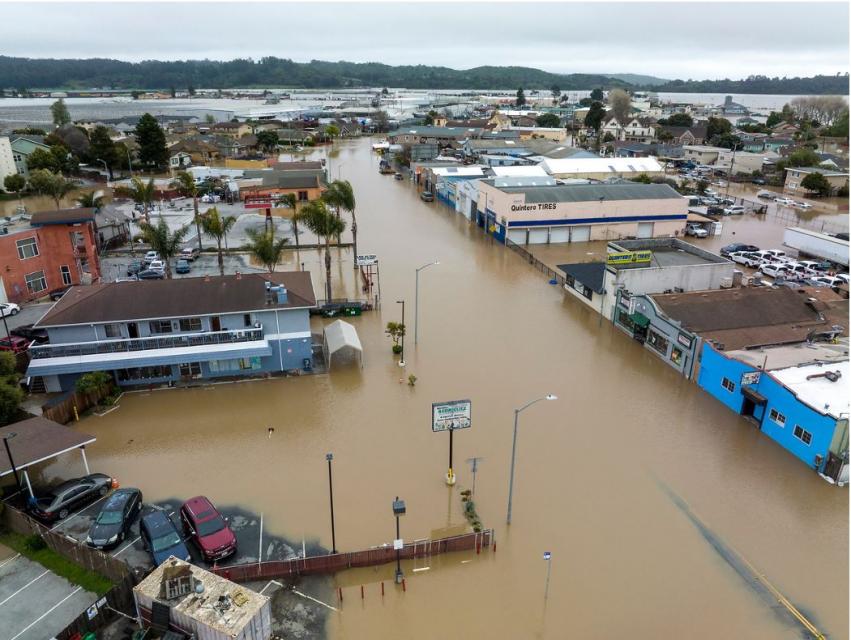 ‘Back to the Future’ (p: 307) puts students in the decision-making hot seat of where to build a new community on a floodplain. The California versions of the activity include a location image and data from an actual USGS stream gauge on the Sacramento River. It also includes enhanced scenario arguments taken from the current debates in California on this very subject. Students consider a future of increasing extremes of flood and drought, water and energy conservation and potential economic ramifications of each location in addition to current flood-risk calculations.
‘Back to the Future’ (p: 307) puts students in the decision-making hot seat of where to build a new community on a floodplain. The California versions of the activity include a location image and data from an actual USGS stream gauge on the Sacramento River. It also includes enhanced scenario arguments taken from the current debates in California on this very subject. Students consider a future of increasing extremes of flood and drought, water and energy conservation and potential economic ramifications of each location in addition to current flood-risk calculations.
Teachers could most certainly add greater complexity by having students consider the risks of building elsewhere in the state. Does the flood risk the Central Valley and along our rivers outweigh the risk of fire, earthquake or lack of water resources in other parts of the state? The scenario also could be couched in terms of the very real need for more affordable housing and more water, energy and climate-resilient communities. Again, I wouldn’t be surprised if students end up going beyond the mere argument of where to build to outline how to engineer a community to better withstand extreme events that would work in real life.
Engaging students in ‘Get the Groundwater Picture’ (p: 143) will have them studying another hot topic in managing California water resources – how to recharge our depleted aquifers, and how to do it as quickly as possible over a large area. The scenario posed in the activity mirrors our current condition in many areas of the state, particularly in the Central Valley – with an aquifer over-pumped by human demands on the surface. The activity is already set up for students to study the real-life consequences of aquifer depletion in California and then consider strategies for recharging an aquifer.
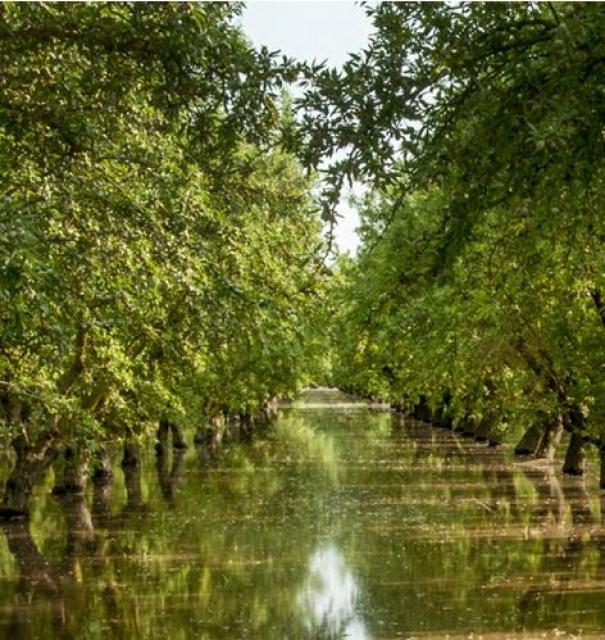 The land uses noted in the ‘Get the Groundwater Picture’ data allows one to tie what is learned in the activity to what is learned in ‘Color Me a Watershed,’ allowing students to consider how land-use changes can affect the downward flow of water into an aquifer as well as water’s flow across the landscape. What additional changes to their ‘Color Me a Watershed’ maps might students suggest that allow for greater groundwater recharge – and how are California water managers and researchers attempting to do the same presently?
The land uses noted in the ‘Get the Groundwater Picture’ data allows one to tie what is learned in the activity to what is learned in ‘Color Me a Watershed,’ allowing students to consider how land-use changes can affect the downward flow of water into an aquifer as well as water’s flow across the landscape. What additional changes to their ‘Color Me a Watershed’ maps might students suggest that allow for greater groundwater recharge – and how are California water managers and researchers attempting to do the same presently?
‘Blue River,’ ‘Color Me a Watershed,’ and ‘Get the Groundwater Picture’ all have parts that can be used to engage elementary students in learning about water processes and management, but most of the suggested activities in this article are more in the realm of secondary grade levels. However, there are past Gazettes that focus on helping students engage in learning about the Earth processes and human interactions that underlie this article, including the Spring 2017 edition on groundwater and the Autumn 2016 edition on mapping water flow on the schoolyard.
I would also encourage everyone to attend one of our ‘Floods, Floodplains and California Water’ workshops this spring or one of the Forestry Institute for Teachers or California Water Institutes this summer to learn more about the interplay of Earth systems, human interactions and how both play out in California today. You will find more about these workshops in the Professional Development Opportunities section of this Gazette. There are also a variety of Websites of Interest to pair with the activities in the article, and a list of upcoming Spring Events and Grants, Awards, & Student Opportunities.
Hope you have a wonderful spring!
WEBSITES OF INTEREST
Article: ‘A Summary and Analysis of ‘Goldilocks and the Three Bears’
A blonde-haired juvenile delinquent breaks into an ursine family home and proceeds to indulge her penchant for fussy eating and fidgetiness around furniture. This is, in brief, a summary of what happens in the fairy tale of ‘Goldilocks and the Three Bears’. Such a story, if true, would be of more interest to the police and the psychiatrists than the literary critic; but instead, this famous fairy story is one of the best-loved pieces of children’s fiction in existence.
This site offers the most current local and statewide water conditions down to your neighborhood! Learn about current statewide hydroclimate and water supply conditions, including precipitation, temperature, reservoir storage, groundwater conditions, snowpack, streamflow, soil moisture and vegetation conditions. To view the conditions in your local area, enter your address or zip code in the location finder.
Article: ‘California storms create paradox: Too much water in reservoirs, too soon’
The storms have created a tricky situation for officials who manage state and federal reservoirs in California, since they have to juggle the risk of flooding Central Valley communities with the risk of letting too much water go from reservoirs. They must strike a balance between holding as much water in storage, as long as they can, while maintaining room in reservoirs for more water later in the season.
Snow is an important part of Earth’s climate system. The presence or absence of snow controls patterns of heating and cooling over Earth’s land surface more than any other single land surface feature.Beyond weather and climate, snow has far-reaching effects on people because of snow’s importance to global food, water, travel hazards, avalanche risks, and infrastructure design. Snow also affects wildlife migration, hibernation, and survival.
Article: ‘Could Giant Blankets and Other Extreme Actions Save Glaciers?’
Plastic coverings, gravity snow guns and painted rocks could slow ice melt in high mountains In Switzerland, one professor floated the idea of erecting giant shields to protect the ice from katabatic winds (dense, high-elevation airflows that can scrub away snow and ice). In the Andes, researchers have proposed whitewashing rocks to reflect warming sunlight.
Article: ‘Can a new approach to managing California reservoirs save water and still protect again floods?’
New tools and operating methods are emerging that could lead the way to a redefined system that improves both water supply and flood protection capabilities. Known as Forecast-Informed Reservoir Operations (FIRO), the approach centers on using the latest forecast technology to plan for the arrival of atmospheric rivers.
Many of California’s flood management systems were designed for the hydrological conditions of the previous century. California’s climate is changing with larger winter storms, more precipitation falling as rain rather than snow, and more extreme high tides. These changes, along with rising sea level, will make many current flood management systems obsolete within decades, requiring major investments in new infrastructure and new approaches to reducing flood risk.
Article: ‘Freak Weather Highlights Risk Surrounding California Development Decisions’
Climate considerations have now become a full-year preoccupation for developers, insurers and others who finance projects in California and other West Coast states — not just the summer and fall wildfire seasons that have wreaked havoc during the past decade, or the considerations made necessary by earthquake preparedness.
Article: ‘Floods’ Worst Ravages Will Be Visited Upon California’s Poorest’
The worst of California’s flood woes, both this month and into the long future, will be visited upon the state’s poorest residents. These are the workers and families who often live in affordable-housing units or lower-cost rentals placed in some of the highest-risk areas for flooding, housing that was often built poorly (or cheaply) in the first place.
Article: ‘California’s Rivers Could Help Protect the State from Flood and Drought’
Most levee systems will face challenges—if not failures—in the next big flood. The water needs a safe conveyance corridor through cities including Modesto, Manteca, Lathrop, and Stockton. We work with farmers and enterprises to buy marginal, flood-prone farmland in harm’s way. Farmers shift to different properties that are less risky, and we turn those lands into flood-compatible habitat areas throughout the state.
Article: ‘Flush with rain, California plans to replenish drought-depleted groundwater with floodwaters’
The State Water Resources Control Board approved a request by the U.S. Bureau of Reclamation to take more than 600,000 acre-feet from the river and send much of that water flowing to areas where it can spread out, soak into the ground and percolate down to the aquifer beneath the San Joaquin Valley.
Article: ‘A Decade of Recharge Leads to Statewide Solutions’
Flood-Managed Aquifer Recharge (Flood-MAR) expands on traditional dedicated recharge basins and other static recharge methods to a variety of practices that capture surface water when it’s available. Flood-MAR focuses on flood releases and precipitation events for recharge on agricultural land, working landscapes, and other sites like wildlife refuges, floodplains, and flood bypasses.
U.S. Geological Survey: Water Science School
Tap into over 140 years of USGS research in the natural sciences in the form of activities, maps, podcasts, online lectures, videos and more. Browse thousands of ideas for using these resources in elementary, secondary, university and informal education settings. Don’t forget to check-out the USGS Water Science School loaded with great material for use with multiple Project WET activities!
California Department of Water Resources: Education
We provide a variety of resources to K-12 educators – including parents – to encourage water education in and out of the classroom. Our free supplementary materials can be used to help learn about California’s water resources. Check out our ‘Water Wednesdays’ You Tube page for recording of our weekly conversations with DWR researchers on a range of water topics.
PROFESSIONAL DEVELOPMENT OPPORTUNITIES
Floods, Floodplains & California Water Workshops
The California Department of Water Resources and Water Education Foundation invite K-12 educators to join us for a flood-focused Project WET workshop. Join us this spring at the Cosumnes River Preserve, Glenn County or in the Yolo Basin as we explore and learn about the benefits that floodplains provide for wildlife, agriculture, and nearby communities. A $100 stipend will be provided and CEU credit is available for purchase following completion of the workshop.
Forestry Institute for Teachers
Enjoy a week with natural resource professionals and advocates gaining a deeper understanding of forest ecosystems and human use of natural resources. Participants receive a high-quality professional development experience focused on interdisciplinary content and practices at the heart of current forest issues – as well as Common Core and Next Generation Science Standards. 2023 session dates will be in Tuolumne, Shasta, Humboldt Counties – and a new site in El Dorado County!
California Water Institutes for Teachers
Participants take part in an intensive three days focused on a region’s complex water resources, system ties to the State Water Project and first-hand experiential learning. Our place-based learning experiences will provide teachers with the tools to support students development of environmental literacy skills focused on the watersheds where they live and recreate. Our 2023 institutes will occur in Solano, Butte and Sacramento Counties – and a new session in Los Angeles County!
Early Childhood Education Agriculture Workshop
Join us on either May 4th or May 6th for a free webinar that will help you introduce young learners to agriculture concepts in a developmentally appropriate way. We will showcase literacy and math activities, themed songs, and circle time ideas from our new early childhood unit, Life on the Farm. This webinar is open to all educators, with a focus on Pre-K, TK, and kindergarten classrooms. Registration is required.
California Project WET Workshops
Join us this spring for Project WET workshops focused on increasing your knowledge and environmental literacy through the lens of water, and how to use the interdisciplinary activities of Project WET to engage students K-12 in the study of climate change and actions students can take to water research and future careers in California water and exploring the interface between fresh water and the sea!
California Project Learning Tree Workshops
Project Learning Tree uses trees and forests as windows on the world to increase students’ understanding of the environment and actions they can take to conserve it. Trainings are offered to schools, teachers, parents, students and other non-profit organizations for outdoor environmental education programs.
California Environmental Education Interagency Network
The CEEIN Network is a consortium of educators representing state departments and partner organizations. The partnership maintains an online calendar, where educators can find a workshop experiences and participatory stewardship opportunities related to environmental education and environmental literacy offered by the partnership.
SPRING EVENTS
March 22, 2023: World Water Day
“Accelerating Change” is the 2023 theme to focus on the need to solve the global water and sanitation crisis. You and your family, school and community can make a difference by changing the way we consume, use and manage water in your lives. This is a once-in-a-generation moment for the world to unite around water. Play your part. Do what you can.
March 29-30, 2023: Children’s Water Education Festival
We’re back! The Children’s Water Education Festival returns to an in-person event this year at the University of California, Irvine. The Festival presents a unique opportunity to educate third, fourth and fifth grade Orange County students about the environment. Registration is now open and space is limited!
April 22, 2023: Earth Day 2023
What each of us does, and how we do it, has a massive ripple effect on our ecosystems, as well as the pace of corporate and government action. Through civic actions and our day-to-day life choices, we have the power to lobby for and support the businesses who actively choose eco-friendly practices and climate-friendly investments. Here are 52 ways to get started!
April 22 – 30, 2023: National Park Week
National Park Week is a time to explore amazing places, discover stories of history and culture, help out, and find your park. Parks across the country will host a variety of special programs, events, and digital experiences. Entrance fees are waived on April 22 to kick off the week and encourage everyone to enjoy their national parks!
April 28 – May 1, 2023: City Nature Challenge 2023
Join us as we celebrate the nature by documenting all the species we can find in and around urban areas. The City Nature Challenge is an international effort for people to find and document plants and wildlife in cities across the globe. Cities are working together to document organisms and species, and engage people in.
May 4, 2023: Big Day of Giving
Save the date! Big Day of Giving, a 24-hour online fundraising giving challenge. Your gift can help us train more Project WET facilitators and expand our workshops throughout California. Gifts are also eligible for booster prizes throughout the day. You can learn more at our Big Day of Giving page. Thank you for being part of the Project WET community – and May the Fourth be with you!
May 5 – 7, 2023: AEOE Statewide Spring Conference
Join us for a weekend of learning, networking, and fun in the redwoods at YMCA Camp Jones Gulch in La Honda! The conference includes ~30 workshops, a resource fair, EECP presentations, live and silent auction, evening entertainment, and more. Lodging and meals are offered onsite on Saturday and Sunday. Camping and cabin dorm accommodations are available for Friday and Saturday night.
May 2023: California Water Awareness Month
California is experiencing climate shifts that bring more extreme weather, resulting in a massive swing of our driest three years on record moving into some of the wettest weeks in recent history. Despite these storms, we are still in a drought. Simple actions we can take right now will help save water in a big way. Together, our actions add up to a better future!
June 3 – 11, 2023: California Invasive Species Action Week
Help us celebrate California’s Invasive Species Action Week, by volunteering to take action to help stop the spread of invasive species, find an event near you by visiting our Schedule of Events! Don’t forget to check out the Project WET activity ‘Invaders’ (p: 263)– and checkout this website for recipes for a variety of invasive species!
June 8, 2023: World Ocean Day
Our ocean covers 70% of the planet and supports life as we know it. Every second breath we take comes from the ocean. Our ocean feeds billions of people and hosts 80% of the Earth’s biodiversity. World Oceans Day is a day to take action and raise awareness. From raising awareness to taking action or simply enjoying sustainable seafood, there’s plenty you can do to take part this World Oceans Day.
GRANTS, AWARDS & STUDENT OPPORTUNITIES
California Climate Investments for Public School & School Districts
Public schools and schools districts can apply for funding for a variety of programs that reduce greenhouse gas emissions and improve public health. Funding areas include upgrading school infrastructure, transportation, school recycling and composting programs and schoolyards.
One Planet Challenge - Competition Begins: March 15, 2023
One Planet Challenge is a global initiative teaching young people ages 10-16 about climate change and how to protect the planet. It comprises two 10-day school competitions where students learn independently, earn points and win prizes. Go head-to-head with schools around the world! The challenge is free, worldwide and accessible on any device. Sign up your school now!
Brower Youth Awards: May 1, 2023
The Brower Youth Awards for Environmental Leadership recognizes the outstanding leadership efforts of young people ages 13 to 22 who are working for the protection of our shared planet. Award recipients will receive a $3,000 cash prize, a short film produced about their work, and flight and lodging accommodations for a weeklong trip to the San Francisco Bay Area.
Stockholm Junior Water Prize – Deadline: April 15, 2023
The Stockholm Junior Water Prize competition is the world’s most prestigious water-science competition for students. The goal of the SJWP program is to increase students’ interest in water-related issues, research and awareness about global water challenges. The winner of the state competition will advance to the national level, and the winner of that event will represent America at the global competition in Sweden.
Gloria Barron Prize for Young Heroes – Deadline: April 15, 2023
The Gloria Barron Prize honors 25 outstanding young leaders ages 8 to 18 from across America and Canada who have made a significant positive impact on people, their communities, and the environment. The top ten winners each receive a $10,000 to be applied to their higher education or to their service project. The primary goal of the Prize is to shine the spotlight on these amazing young people so that their stories will inspire others.
Invasive Species Youth Art Contest – Deadline: May 1, 2023
Invasive species spread in many ways, and everyone can play a part in stopping them from spreading. Create an original piece showing how Californians can work together to “Think Ahead; Stop the Spread!” Be creative! All types of media are welcome and encouraged: drawings, paintings, mixed media, sculpture, animations, comic strips, videos, audio!
Climate Video Challenge – Deadline: May 31, 2023
Millions of people around the world – especially youth – are fighting to prevent and adapt to climate change, while creating more equity and balanced justice in how we relate to one another as citizens. The California Coastal Commission challenges California middle and high school students to answer the question: ‘What is your vision for a thriving future?’
Ocean Awareness Student Contest – Deadline: June 13, 2023
The annual Ocean Awareness Contest is a platform for young people to learn about environmental issues through art-making and creative communication, explore their relationship to a changing world, and become advocates for positive change. Students ages 11-18 from around the world are invited to participate.
The Forestry Challenge
The Forestry Challenge is an academic event for high school students in technical forestry and current forestry topics. Participants spend four days in the forest learning about the ecology and management of the forested landscapes that provide communities with water, recreational opportunities, wood products, and wildlife habitat. Fall 2023 Pre-registration – Now Open!
CREDITS
California Project WET Gazette is published by the Water Education Foundation, which serves as the state coordinator and host institution for Project WET USA, a program of the Project WET Foundation
This material is based upon work supported by the U.S. Geological Survey under Cooperative Agreement # GG1AC10429. The views and conclusions contained in this document are those of the authors and should not be interpreted as representing the opinions or policies of the U.S. Geological Survey. Mention of trade names or commercial products does not constitute their endorsement by the U.S. Geological Survey.
Editor: Brian Brown, California Project WET Coordinator
Email me here with questions or recommendations for the Gazette!
Water Education Foundation
2151 River Plaza Drive, Suite 205
Sacramento CA 95833
916.444.6240
www.watereducation.org










